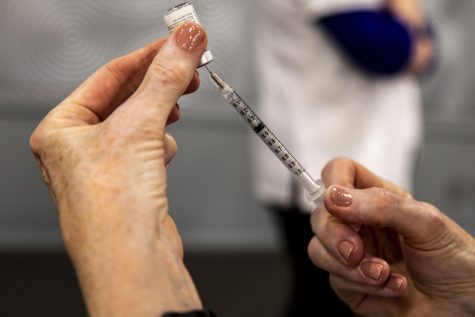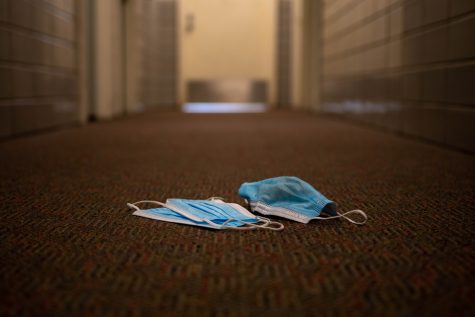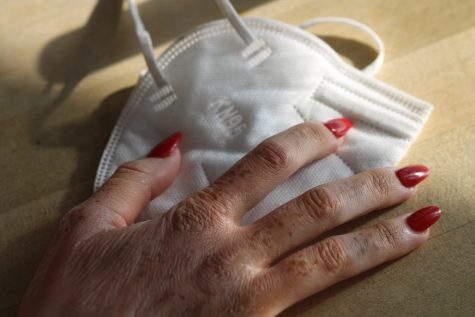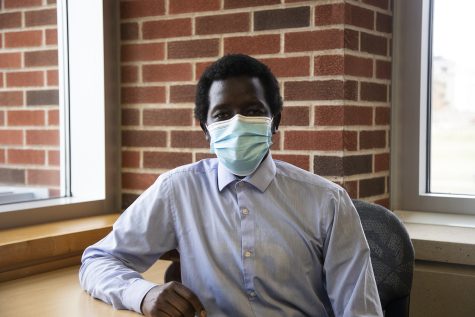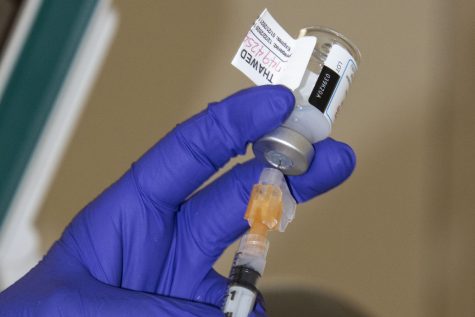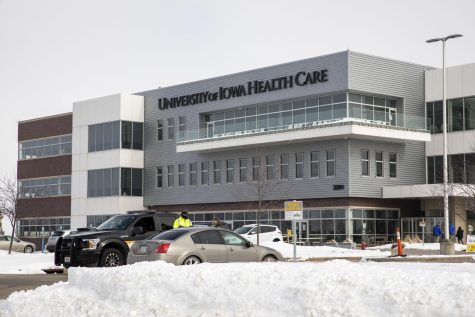Iowa City hospitals ramp up efforts to test for and treat COVID-19 ahead of potential surge
UIHC Chief Medical Officer Theresa Brennan speaks during a media availability event at the IMU on March 4, 2020. The University of Iowa officials spoke to reporters about the UI’s actions regarding coronavirus.
March 31, 2020
Local health officials are ramping up ways to test for and treat COVID-19 as Iowa hospitals prepare for a projected surge in patients seeking treatment for the disease.
UI Hospitals and Clinics Chief Medical Officer Theresa Brennan said the health-care system is currently treating five inpatients for COVID-19. UIHC has treated seven other patients who have been hospitalized since its first patient and who have been successfully discharged.
UIHC continues to monitor through its home-treatment team between 20 and 30 patients per day who have tested positive for COVID-19, and who have been in that high-risk group, she said.
Under the leadership of UI Vice President for Medical Affairs Brooks Jackson, she said, UIHC is also exploring convalescent plasma treatment. This would allow UIHC to take antibodies from someone who has recovered from COVID-19 and give it to someone who needs them to fight the disease caused by the novel coronavirus.
Jackson is a transfusion medicine physician, she said, so he has completed this treatment with other diseases and knows what needs to be done. UIHC is in the process of receiving approval from Food and Drug Administration and the Institutional Review Board to pursue that option.
She said UIHC patients who have received treatment are not far enough out in recovery to collect plasma to attempt this treatment, but UIHC will look for volunteers eventually once that’s possible. She said UIHC would supply protocols regarding the proper length of time to do that treatment once that’s available.
To continue to treat patients who need medical care, Brennan said UIHC created a model to convert QuickCare, Urgent Care, and primary care units into areas that can screen individuals for influenza-like illness symptoms.
Individuals are first seen through a video visit, she said, and if that identifies a need to be tested or seen because the individual is unwell, they are then directed to an influenza-like illness clinic for testing, evaluation, and treatment. If they need to visit the emergency room, they are directed there as well.
UIHC has also converted some of its inpatient units into negative-pressure units in preparation for a potential surge of COVID-19 patients, she said.
Brennan urged the general public to continue to wash their hands, avoid touching their faces, and practice social distancing to help contain the spread of COVID-19.
“We are very blessed to to live in this community and have wonderful Iowans that are here to support our health-care workers,” she said. “We ask that the public help and do their part as well.”
Mercy Hospital public-information officer Margaret Reese said Mercy now has drive-up COVID-19 testing at a location in Coralville where health-care workers can provide rapid influenza strep, and COVID-19 testing through a reference lab. There is a 24-hour or so turnaround time for the test results there, she said.
This method of testing supports Mercy’s telehealth appointments, she said, but providers must call ahead to schedule appointments and patients must have a medical order before going there.
“It minimizes provider and colleague exposure in the clinic sites as well as other patients, and it conserves [personal protective equipment], which is critical for us to do by centralizing these tests in one location.”
She added that Mercy’s new acute respiratory clinic is now open in a tent at the same location that is by appointment. Providers may refer patients who have respiratory symptoms there for an in-person visit after a provider determines whether a telehealth visit, in-person examination, or emergency care are needed.
Patients will be sent there for respiratory symptoms, including a fever equal to or greater than 100.4 degrees with a cough and or shortness of breath, sore throat, and the need for a physical exam.
Those efforts come ahead of a potential surge in the number of positive COVID-19 cases in Iowa. Iowa Public Health Department Deputy Director Sarah Reisetter said Sunday that the first peak of the virus would come in the next two or three weeks, though the situation changes daily.
Johnson County Emergency Management Director Dave Wilson said with testing efforts ramping up, the more health officials will find positive cases.
He said emergency-management officials are checking in with hospitals regularly to determine how many people need hospital beds, see how many hospital staff have COVID-19 and are out from work for two weeks, how many patients have been discharged, and whether there’s an uptick on hospital admissions or deaths because of COVID-19.
Most people will not need hospitalizations, he said, but the concern is ensuring the hospitals can treat the patients that do need care.
“That’s our barometer,” he said. “The fact that people are testing positive for it just means that we’re doing more testing. We’re finding more of it. We’re looking more, right? So, that doesn’t alarm me as much…”
Johnson County Public Health Director Dave Koch said continuing to test is crucial to understanding the virus.
“I think as additional sampling and testing is going on, we’re going to have more and more data that we’re able to utilize to make well-informed decisions,” he said. “Without that data also, we’re not able to really learn as much as we can about this virus, and so it’s critically important to be able to continue that testing as often as available as those test kits are.”
Koch said that of the 73 positive COVID-19 cases in Johnson County, 31 of those have recovered and are no longer considered infectious, so they are now under the same recommendations as the general public to maintain good hygiene and practice social distancing.
He urged county residents to continue that practice but said people could go outside to get fresh air as needed, emphasizing the importance of avoiding crowds and maintaining six feet of distance while doing so.
“This is a confusing time, and being surrounded by family and friends is what many of us would normally do to destress and to find comfort,” he said. “Johnson County residents, this is not a normal time.”






